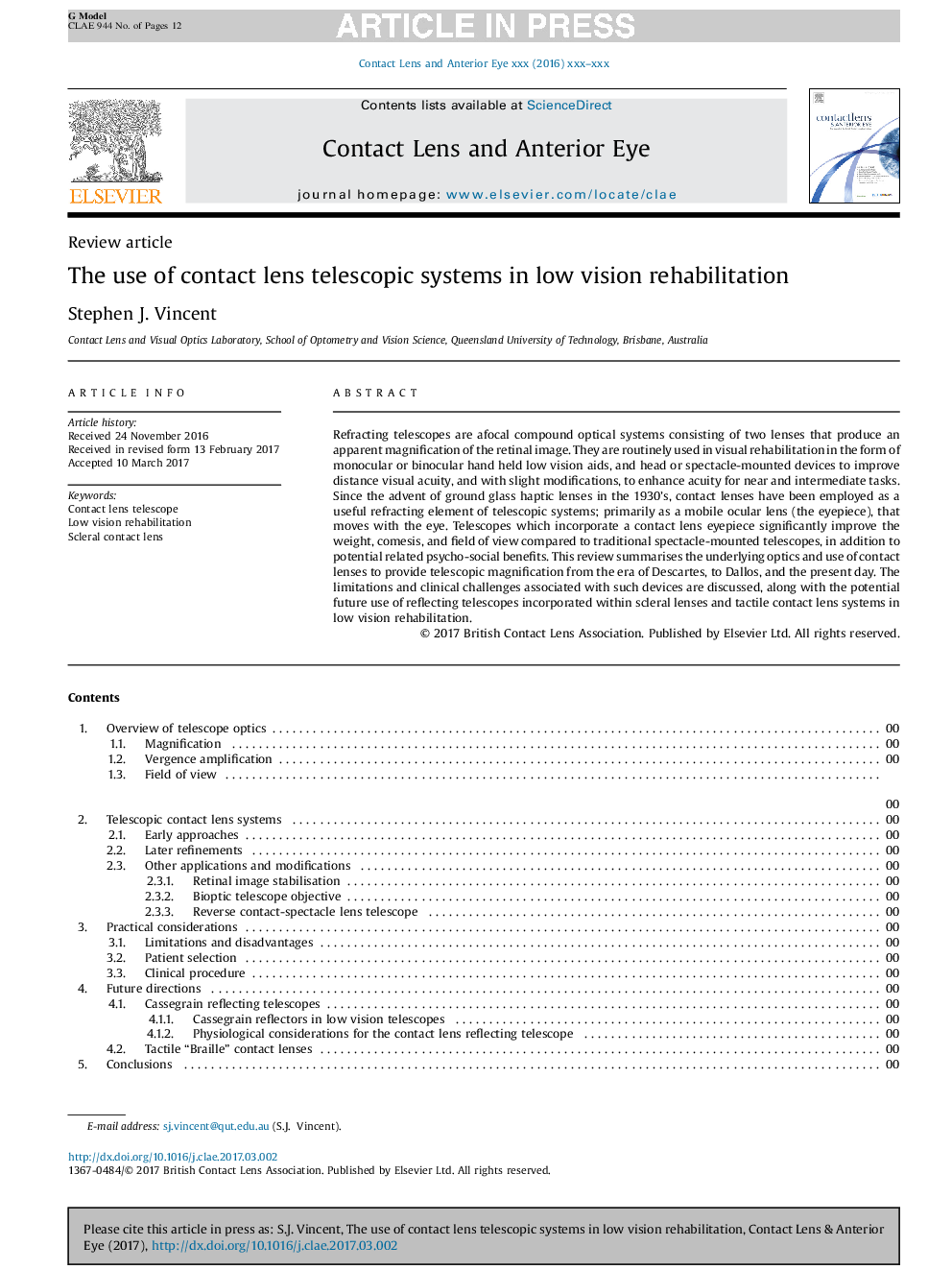| Article ID | Journal | Published Year | Pages | File Type |
|---|---|---|---|---|
| 5573623 | Contact Lens and Anterior Eye | 2017 | 12 Pages |
Abstract
Refracting telescopes are afocal compound optical systems consisting of two lenses that produce an apparent magnification of the retinal image. They are routinely used in visual rehabilitation in the form of monocular or binocular hand held low vision aids, and head or spectacle-mounted devices to improve distance visual acuity, and with slight modifications, to enhance acuity for near and intermediate tasks. Since the advent of ground glass haptic lenses in the 1930's, contact lenses have been employed as a useful refracting element of telescopic systems; primarily as a mobile ocular lens (the eyepiece), that moves with the eye. Telescopes which incorporate a contact lens eyepiece significantly improve the weight, comesis, and field of view compared to traditional spectacle-mounted telescopes, in addition to potential related psycho-social benefits. This review summarises the underlying optics and use of contact lenses to provide telescopic magnification from the era of Descartes, to Dallos, and the present day. The limitations and clinical challenges associated with such devices are discussed, along with the potential future use of reflecting telescopes incorporated within scleral lenses and tactile contact lens systems in low vision rehabilitation.
Related Topics
Health Sciences
Medicine and Dentistry
Ophthalmology
Authors
Stephen J. Vincent,
